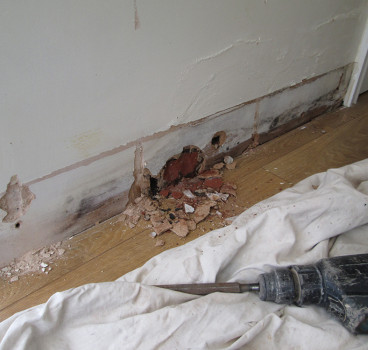How smart materials are revolutionising modern construction
The construction industry has long relied on passive, inert materials to create static buildings. While these traditional elements have served their purpose for centuries, a new generation of materials is emerging that fundamentally challenges this concept. Smart materials, also known as intelligent or responsive materials, possess the remarkable ability to change their properties in direct response to external stimuli. These are not passive components, but active participants in their environment, capable of reacting to changes in heat, light, pressure, or electrical fields. This innovation marks a definitive shift towards a more dynamic and intelligent built environment, creating structures that are more efficient, sustainable and aesthetically expressive, writes John Ridgeway.
Smart materials essentially have a direct stimulus-response relationship. This means that the material remains in a stable state until a specific external force or condition, the stimulus, triggers a measurable change. This response can manifest in various ways, such as a change in colour, shape, light emission, or even mechanical properties. This principle moves architecture from a state of fixed design to one of dynamic adaptability. The science behind this is varied and complex, often involving advanced polymers, alloys and composites. Understanding how this direct cause-and-effect mechanism works, is therefore crucial for appreciating how these materials are poised to transform modern construction.
One of the most accessible examples of this technology is the use of thermochromic materials. These substances change colour in response to temperature fluctuations. In construction, thermochromic paints or films can be applied to a building’s exterior facade. During a hot, sunny day, the material can be engineered to change to a lighter, more reflective colour, deflecting sunlight and reducing the heat absorbed by the building’s envelope. This directly lowers the internal temperature, decreasing the workload on the air conditioning system and reducing energy consumption.
Conversely, during colder periods, the material can revert to a darker, more absorptive colour, helping the building to retain heat and reduce reliance on central heating. This not only offers a powerful tool for energy control, but also provides a dynamic visual aesthetic, with facades that visually adapt to the ambient weather. This practical application demonstrates how smart materials can turn a building’s surface into an active participant in its own thermal regulation, offering a sustainable alternative to traditional mechanical heating and cooling systems.
The power of light
In addition to thermochromics, the field of smart materials offers a vast array of other innovations reshaping construction. Photochromic materials, for instance, are those that change colour or tint in response to light intensity. This is most commonly seen in self-tinting lenses in glasses, but in architecture, it allows for the development of adaptive building facades and windows. These "smart windows" automatically darken on a bright day to reduce glare and thermal gain and then become clear again as light levels fall. This passive light control enhances occupant comfort while simultaneously optimising energy use, removing the need for blinds or curtains. Their implementation represents a major step towards creating intelligent, responsive building envelopes that react autonomously to changing environmental conditions, providing a sophisticated layer of comfort control that is both elegant and efficient.
Another compelling class of responsive materials is piezoelectrics. These unique materials generate an electric charge when subjected to mechanical stress, such as pressure or vibration. In urban infrastructure, this property presents a groundbreaking opportunity for energy harvesting. Imagine pavement tiles or flooring embedded with piezoelectric materials in high-traffic areas, like train stations or busy walkways. The mechanical energy generated by a continuous stream of foot traffic could be converted into electricity, providing a sustainable power source for local lighting, signage, or small electronic devices. The same principle applies to buildings where structural vibrations from wind or machinery could be harnessed. This innovative application transforms a building’s movement from an inert reality into a source of usable energy, moving us closer to a future of truly self-sustaining infrastructure.

The concept of self-healing is also at the forefront of smart material development. Engineers are creating materials that can autonomously repair small cracks and damage, extending their lifespan and reducing maintenance costs. Self-healing concrete, for example, can be embedded with microcapsules containing bacteria and a nutrient source. When a crack forms, the capsules rupture, releasing the bacteria which then produce calcium carbonate to fill the void. This revolutionary approach addresses one of the most persistent challenges in construction - the degradation of concrete over time. By enabling a structure to repair its own superficial damage, these materials significantly enhance its durability and resilience, offering a valuable long-term solution for maintaining critical infrastructure such as bridges and highways, but also extending the lifecycle of conventional buildings.
Related read: Meet Superwood – a high-performance timber that could change how we build.
Memory alloys
Furthermore, shape memory alloys (SMAs) and other composites are opening up possibilities for adaptive architecture. These materials can be deformed, but will return to their original shape when exposed to a specific temperature or energy source. This property has potential applications in dynamic building elements, such as facade vents that automatically open and close in response to temperature changes, or self-erecting components for rapid and efficient construction. They enable a building to actively adapt its form and function in real-time, responding to occupant needs and environmental demands without complex mechanical systems. This integration of responsive material design allows buildings to become more than just static structures; they become active participants in their environment.
The collective integration of these smart materials marks a definitive shift from passive to active construction, offering a compelling array of benefits. From a sustainability standpoint, their ability to regulate temperature, harvest energy and repair damage significantly reduces a building’s environmental footprint and its reliance on external power sources. From an economic perspective, their enhanced durability and reduced maintenance needs provide a superior long-term value proposition.
Architecturally as well, they open up a new realm of creative expression, allowing buildings to possess dynamic and interactive facades that engage with their surroundings. Ultimately, smart materials are not a futuristic fantasy, but a present-day reality, offering a tangible pathway to a more intelligent, resilient and sustainable built environment where structures are no longer inert objects, but responsive systems that interact intelligently with the world around them.
Additional Blogs

How construction can cut Its carbon footprint by caring for soil
Soil is often dismissed as mere dirt, but it is one of the planet’s most powerful carbon stores, holding more than all of the world’s forests combined. Yet in our rush to build, pave and develop, we...
Read moreWhat is bridging damp? How it happens and how to fix it
Bridging damp happens when moisture finds a path around the building’s damp-proof course (DPC) so it reaches your internal walls and skirting. If you see damp patches rising above the skirting or...
Read more

The silent death of the fixed-price contract
For decades, the fixed-price contract has been the backbone of construction procurement. It promised certainty with a defined scope, an agreed sum and a clear transfer of risk from client to...
Read more